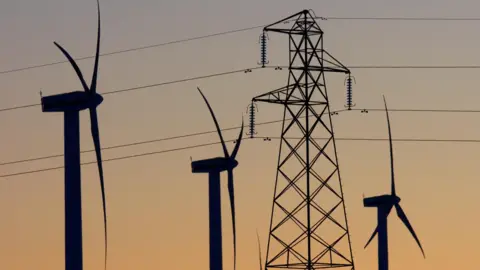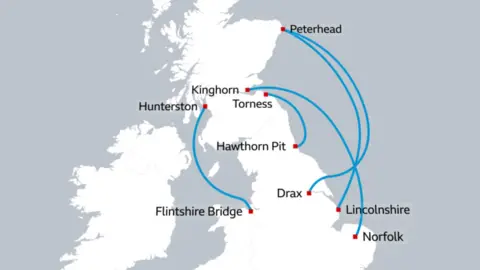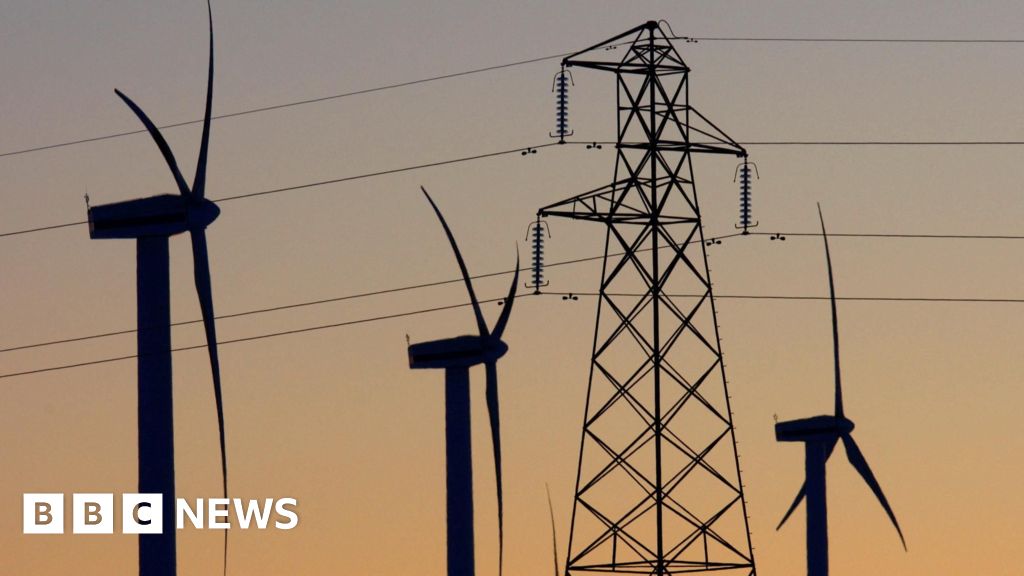 BBC
BBCA multi-billion pound subsea cable that can shift vast amounts of renewable electricity between Scotland and England has been given the go-ahead by regulators.
SSEN Transmission says the energy transfer project is needed to move energy around the grid on days when the wind doesn’t blow or demand is high.
The two 315-mile (507km) cables will run from Peterhead in Aberdeenshire to Drax in North Yorkshire and will initially work alongside a similar link down the west coast.
It is part of wider moves to modernise and increase capacity on the energy transmission network for the shift away from fossil fuels to tackle climate change.
Although the link can carry electricity in both direction, the majority is expected to flow out of Scotland.
The project has been assessed by Ofgem as costing £3.4bn however SSEN says inflationary pressures mean it will now come in at £4.3bn.
 Reuters
ReutersThe country is already a net-exporter of electricity meaning more leaves Scotland than is imported.
But the bi-directional link will also enable electricity to be imported when needed, such as on days of low wind.
A new converter station is being built close to Peterhead power station from where high voltage direct current cables will be laid on the seabed.
The cables will hit land near Bridlington in East Yorkshire where they will be buried underground to Drax and connected into the national grid.
The connection will be large enough to carry enough renewable electricity to power two million homes.
The project will be the first of four subsea electricity links planned along the east coast with the eventual capacity capable of powering 7.5 million homes.

Approval has been given in just five months under the regulator Ofgem’s fast track process.
Energy analyst Sepi Golzari-Munro says the links are vital to modernise the transmission network.
She added: “We’re obviously trying to have cleaner electricity from renewable sources but what this also does, crucially, is improve our energy security and will ultimately bring down bills.”
Approval for Eastern Green Link 2 is likely to be quickly followed by Eastern Green Link 1 connecting Torness in East Lothian with Seaham in County Durham.

The two initial projects are expected to be followed by connections between Peterhead and Lincolnshire and then between Kinghorn in Fife and Norfolk.
They will work alongside the Western Green Link which runs between Hunterston in Ayrshire and the Flintshire Bridge on the border between England and Wales.
Opened in 2017, the 240 mile cable has transmitted more than 23,000 GWh of green energy in its first five years.
Claire Mack from the industry body Scottish Renewables says it is harnessing abundant natural resources.
She said: “In the same way that we’ve exported {oil} from the North Sea for the last four decades and beyond, the same thing is the case with renewables.”
While ground work in Peterhead is already underway, the offshore cable laying is expected to begin in 2028 with the first transmission of electricity due the following year.
Project director Ricky Saez describes Ofgem’s decision as a “major milestone” on top of approvals being given for onshore work by Aberdeenshire Council.


